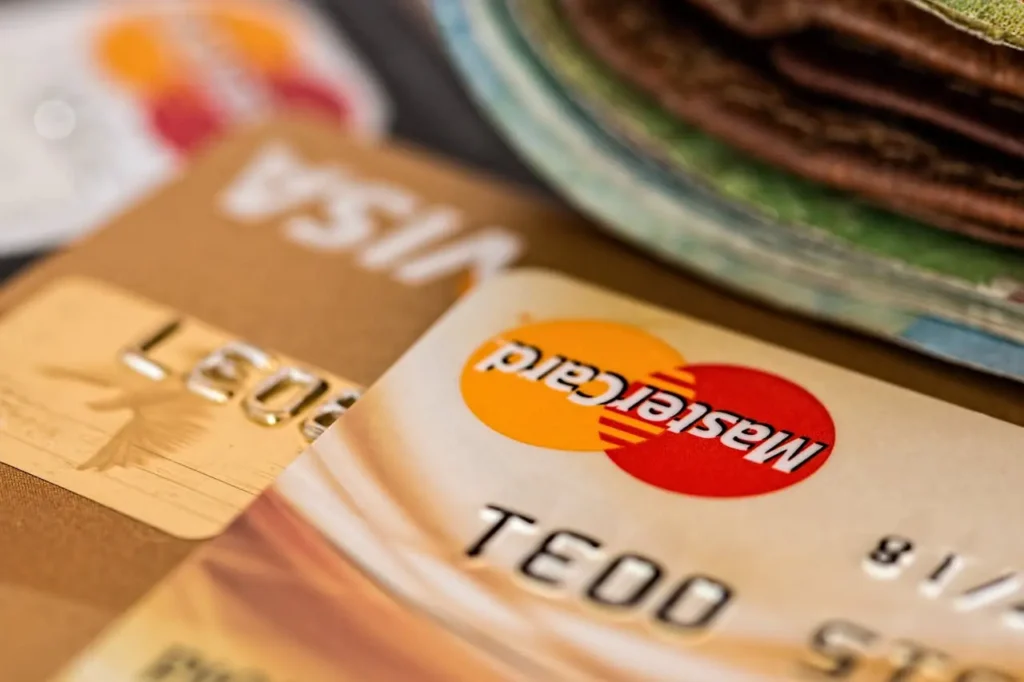Table of Contents
ToggleIntroduction
In today’s gig economy and unpredictable job market, many Americans may find themselves needing a loan despite not having traditional employment or verifiable income. While obtaining a personal loan without income verification is possible, it often comes with higher costs, stricter terms, and increased financial risk.
The following guide explores how to get a personal loan with no income verification in 2025, what your options are, and how to borrow smartly to protect your financial health.
Understanding No-Income Verification Loans: What Are These Loans?
No-income verification loans are financial products that allow borrowers to apply without traditional proof of income, such as pay stubs or W-2 forms. These loans are typically offered to individuals whose income may be irregular or hard to document, like freelancers, small business owners, or early retirees. While they eliminate the need for standard employment verification, lenders still perform a risk assessment using other criteria such as credit score, asset ownership, banking activity, or collateral.
These types of loans have gained traction in the wake of a more diversified labor force. Many Americans now earn money from varied sources—consulting, online businesses, rental income—which aren’t easily categorized under conventional employment. No-income loans offer flexibility, but that convenience often comes at the cost of higher interest rates, tighter repayment windows, or strict eligibility conditions.
Alternative Income Sources Lenders Might Accept
Even when pay stubs are off the table, lenders often require some evidence that the borrower can repay the loan. Instead of traditional employment documentation, alternative income sources may be considered, provided they are consistent and verifiable. Examples include Social Security retirement or disability payments, annuity or pension disbursements, interest-bearing investments, court-ordered alimony or child support, and rental income.
Lenders typically request supporting documents like bank statements, award letters from government programs, or legal agreements for spousal or child support. It’s important to organize these documents ahead of time. Keep in mind that while no-income verification loans may not require proof of employment, they do not mean “no scrutiny.” Lenders still want reassurance that you won’t default.
Loan Options Without Standard Income Verification
1. Credit-Based Personal Loans
If you have a solid credit score—typically 700 or above—you may qualify for a credit-based personal loan that doesn’t require income verification. In these cases, lenders evaluate your ability to manage debt based on your creditworthiness alone. Companies like Upstart, Universal Credit, and SoFi assess factors like your credit utilization ratio, payment history, and overall financial behavior.
Borrowers with excellent credit can often access lower interest rates, larger loan amounts, and more favorable terms. However, these lenders may still request supporting documentation such as bank statements or asset listings to finalize the offer. This option is ideal for retirees or individuals with sizable savings who may not currently be earning a salary.
2. Collateral-Backed Loans
Secured personal loans require borrowers to put up an asset—such as a vehicle, savings account, or even a certificate of deposit (CD)—as collateral. In the absence of verifiable income, these loans give lenders confidence that they can recover the funds in case of non-payment. Since the lender’s risk is offset by the value of the collateral, the terms can be more favorable than unsecured alternatives.
However, the stakes are higher for the borrower. Failure to repay the loan means the lender can legally seize the collateral. For instance, defaulting on a title loan can result in the loss of your vehicle. While these loans may offer better interest rates, they’re best reserved for situations where repayment is manageable and reliable alternative income sources exist.
3. Pawnshop Loans
Pawnshop loans operate by offering you a cash loan in exchange for a valuable item—such as electronics, jewelry, or collectibles. These loans are easy to access and typically don’t require a credit check or proof of income. The pawned item serves as collateral and will be sold if you fail to repay the loan and associated fees.
While this may sound appealing in urgent situations, pawnshop loans often come with high interest rates, short loan terms, and additional fees like storage or appraisal costs. Regulations vary by state. For example, Florida caps interest at 25% per 30 days, while Nevada sets it at 13% per month. If you rely on valuable items for work or personal use, pawning them can have long-term consequences.
4. Cash Advances
Cash advances are short-term loans typically obtained through credit cards or third-party apps like Brigit, Dave, or Payactiv. They’re fast, often requiring no income verification, and funds can be available within hours. Some banking apps also offer early access to your paycheck as a form of cash advance.
The convenience of cash advances comes at a steep price. They often carry interest rates upward of 25% APR and may also include one-time processing or automated teller machine (ATM) fees. Since repayment is expected quickly—usually by your next pay cycle—cash advances should be reserved for absolute emergencies and not recurring expenses.
5. Payday Loans
Payday loans are among the most accessible no-income options, often requiring only an ID and postdated check. Borrowers receive small amounts—usually up to $500—which must be repaid by their next payday. Despite being easy to obtain, payday loans are infamous for their sky-high interest rates, often exceeding 400% APR.
In 2025, many states continue to place restrictions on payday lending practices. Some have banned them outright, while others impose caps on interest rates and fees. Borrowers who can’t repay on time frequently end up taking out new loans to cover old ones, leading to a dangerous cycle of debt.
Risks You Shouldn’t Overlook
1. High Interest Rates
Since no-income verification loans present a higher risk to lenders, they often come with elevated interest rates—sometimes double or triple those of conventional personal loans. The annual percentage rate (APR) can vary from 25% to over 300%, depending on the lender and loan type. High interest can dramatically increase the total repayment amount and make it difficult to break even, especially if the loan is short-term.
2. Short-Term Repayment Windows
Many no-income loans must be repaid in 7 to 30 days. This compressed timeline leaves little room for financial recovery or planning. For example, payday loans generally require full repayment on your next payday. If your alternative income arrives monthly, you could miss your due date, triggering late fees or loan renewal charges.
3. Asset Forfeiture
In secured loans and pawnshop agreements, you risk losing your collateral if you default. Losing a vehicle can make commuting to work impossible; losing electronics can disrupt your freelance work. Before opting for collateral-backed loans, ask yourself whether the asset is essential to your daily life or income.
4. Negative Credit Impact
While some of these loans don’t require a credit check to qualify, many do report to the credit bureaus. Late or missed payments can tank your credit score, making it even harder to secure future financing. Repeated inquiries and short-term borrowing can also signal financial distress, which may affect your eligibility for better financial products.
Steps to Secure a No-Income Loan Wisely
1. Tally All Available Income
Compile a list of all consistent sources of income, no matter how unconventional. This might include freelance earnings, Social Security payments, investment dividends, or rent collected from tenants. Be prepared to document these sources with statements, award letters, or tax forms.
2. Know Your Credit Standing
Check your credit reports from Equifax, Experian, and TransUnion through AnnualCreditReport.com. Look for errors that can be disputed and determine where your score stands. Improving your score—even slightly—before applying can broaden your options and help secure better loan terms.
3. Shop Around and Compare
Don’t accept the first loan offer you receive. Compare rates, fees, and repayment terms across banks, credit unions, fintech apps, and online marketplaces. Use trusted resources like Moneywise Maven to ensure you’re evaluating reputable lenders with transparent terms.
4. Prepare Documentation
While income verification may not be needed, other documents will be. Have your government-issued ID, credit history, proof of alternative income (if applicable), and documents verifying ownership of collateral (for secured loans). Being prepared speeds up approval and boosts your credibility.
5. Plan Your Repayment Strategy
Before accepting a loan, build a plan for repayment. Consider when your next income will arrive, what your monthly expenses look like, and how the loan fits into your budget. If necessary, schedule automatic payments to avoid late fees or missed deadlines.
Smart Alternatives to No-Income Loans
1. Home Equity Loan or HELOC
Homeowners with significant equity may qualify for a home equity loan or a home equity line of credit (HELOC). These products offer lower interest rates compared to unsecured loans because your home acts as collateral. However, the stakes are high—missed payments could lead to foreclosure. These options are best for large, planned expenses like home renovations or medical bills, not short-term cash flow issues.
2. 401(k) or Individual Retirement Account (IRA) Loan
Some employer-sponsored retirement accounts allow you to borrow against your balance. A 401(k) loan typically lets you borrow up to $50,000 or 50% of your vested account value. These loans usually come with low interest rates and don’t impact your credit. However, failure to repay can result in taxes and penalties, especially if you change jobs or leave the workforce.
3. Co-Signed Loan
If you have a family member or friend with strong credit and verifiable income, they can co-sign a loan application with you. This can help you access better interest rates and terms. However, co-signers are equally responsible for repayment, and missed payments can harm their credit and financial standing.
4. Credit Union Emergency Loans
Credit unions often offer emergency loans at lower rates than payday or cash advance loans. These loans are typically small-dollar (under $1,000), have fixed rates, and come with manageable repayment terms. Joining a credit union may involve a small membership fee, but the benefits—like personalized service and member protections—often outweigh the costs.
5. Non-Profit Grants or Loans
Several non-profit organizations offer interest-free loans or emergency grants to individuals facing hardship. Programs from organizations such as the Jewish Free Loan Association help cover costs like rent, car repairs, or medical emergencies without burdening you with interest. While such programs often have application processes and eligibility criteria, they provide a compassionate alternative to predatory lending.
6. Family or Friend Loan
Personal loans from loved ones can be the most flexible and least expensive option available. However, it’s essential to treat these transactions formally. Create a written agreement outlining the loan amount, repayment schedule, and any interest (if applicable). Respecting the arrangement can prevent misunderstandings and protect your relationships.
Final Thoughts: Borrow With Eyes Wide Open
Getting a personal loan without income verification may be a financial lifeline, but it’s one that must be approached with care. From credit-based loans to collateral-backed borrowing, each option carries its own risks and implications. High interest rates, short repayment terms, and the potential for asset loss mean these loans should never be taken lightly.
Before proceeding, evaluate all alternatives—credit unions, non-profit grants, and borrowing from family may offer less costly solutions. If you must borrow without income verification, prioritize reputable lenders, read the fine print, and ensure you have a realistic plan to repay on time.
In today’s evolving financial landscape, financial resilience means not just finding fast money—but borrowing wisely.
Frequently Asked Questions (FAQ)
Can I get a personal loan without any income in 2025?
Yes, it is possible to get a personal loan without traditional income in 2025, but it depends on the lender and your overall financial profile. While you may not need a W-2 or pay stubs, lenders will often require proof of alternative income such as Social Security benefits, rental income, investment returns, or even support payments. Some may offer credit-based or collateral-backed loans, but these come with higher risks and interest rates. It’s essential to demonstrate some ability to repay the loan, even if your income isn’t from a conventional job.
What types of loans don’t require proof of income?
Loans that typically don’t require standard income verification include credit-based personal loans, secured loans backed by collateral, pawnshop loans, cash advances, and payday loans. In these cases, lenders may assess your credit score, savings, or assets instead of employment documents. However, even without proof of income, lenders often still request documents like bank statements or government benefit letters to verify your financial standing. Each loan type comes with varying levels of risk, so careful comparison is key.
Are no-income verification loans safe?
No-income verification loans can be safe if obtained through reputable lenders and used responsibly, but they are often riskier than traditional loans. These loans frequently come with high interest rates, short repayment periods, and the potential for asset loss if they are secured. Some may also have hidden fees or aggressive repayment terms. To stay safe, avoid predatory lenders, read all terms carefully, and borrow only what you’re confident you can repay.
What documents do I need if I don’t have a job?
If you’re applying for a loan without a job, you’ll still need to provide financial documentation that shows your ability to repay. This can include bank statements showing consistent deposits, Social Security or pension award letters, proof of rental income, alimony or child support agreements, or investment account summaries. Having a strong credit score or valuable assets can also help offset the lack of employment documentation.
Do credit unions offer loans without income verification?
Some credit unions do offer emergency or small personal loans without requiring traditional income documentation, especially to long-time members. These loans are usually more affordable than payday loans and may have fixed interest rates and reasonable repayment terms. However, you may still need to show proof of alternative income or savings. Since credit unions are member-owned, they often take a more personalized and flexible approach than large banks.
Will a no-income loan affect my credit score?
Yes, most no-income loans can affect your credit score—positively or negatively—depending on how you manage repayment. If the lender reports to credit bureaus, timely payments can help build or improve your score. However, missed or late payments, especially on high-interest or short-term loans, can severely damage your credit. Additionally, applying for multiple loans in a short period can trigger hard inquiries that may temporarily lower your score.
What are the alternatives to payday loans if I don’t have income?
If you’re looking for alternatives to payday loans without a steady income, consider options like credit union emergency loans, interest-free loans from nonprofit organizations, borrowing from retirement accounts, or asking a family member to co-sign a loan. These alternatives often offer lower interest rates, longer repayment periods, and fewer financial risks. For very short-term needs, using a cash advance app or negotiating payment extensions on existing bills may also be safer than resorting to payday lenders.
Can I use a co-signer to qualify for a loan with no income?
Yes, using a co-signer with a strong credit profile and verifiable income can significantly improve your chances of getting approved for a loan without income. A co-signer essentially agrees to take full responsibility for the loan if you default, which gives lenders greater confidence. However, this also means the co-signer’s credit and finances are at risk, so it’s important to be transparent and responsible with repayment.
What is the interest rate on loans with no income verification in 2025?
Interest rates for loans without income verification in 2025 vary widely depending on the lender, your credit score, and whether the loan is secured or unsecured. Rates can start as low as 8% for strong credit borrowers with collateral, but more commonly range from 25% to over 300% APR for high-risk options like payday loans or cash advances. Always read the terms carefully and calculate the total repayment cost before accepting any loan.
Is a secured loan a better option than an unsecured one if I have no income?
A secured loan may offer better interest rates and approval chances if you lack income but have assets like a car, savings, or valuable property. Since the loan is backed by collateral, lenders feel more protected and may offer more favorable terms. However, the risk of losing your collateral is high if you’re unable to repay on time. Secured loans are only a good idea if you have a clear, reliable plan for repayment.
Featured image credit: Kaboompics.com (Pexels)


